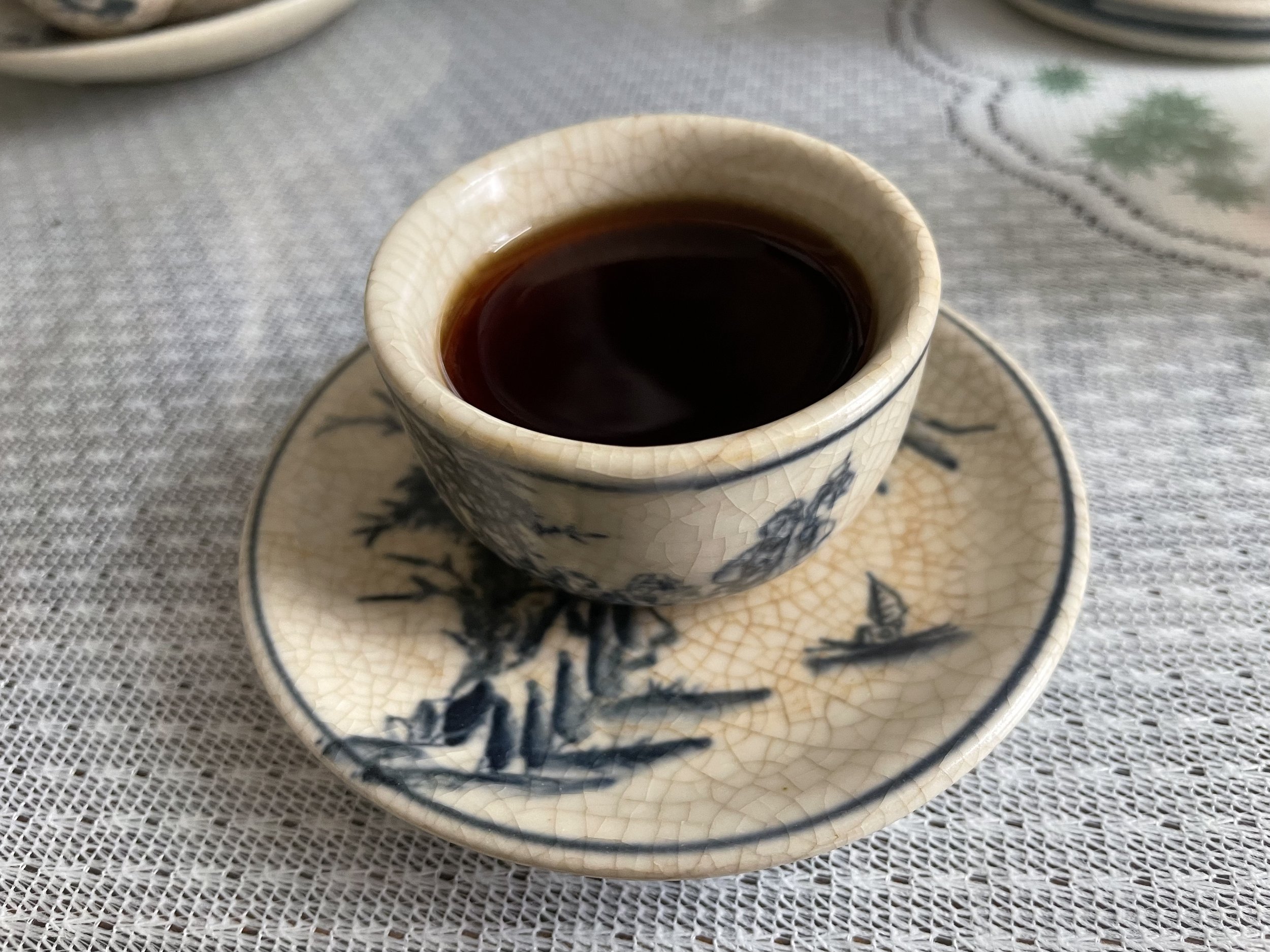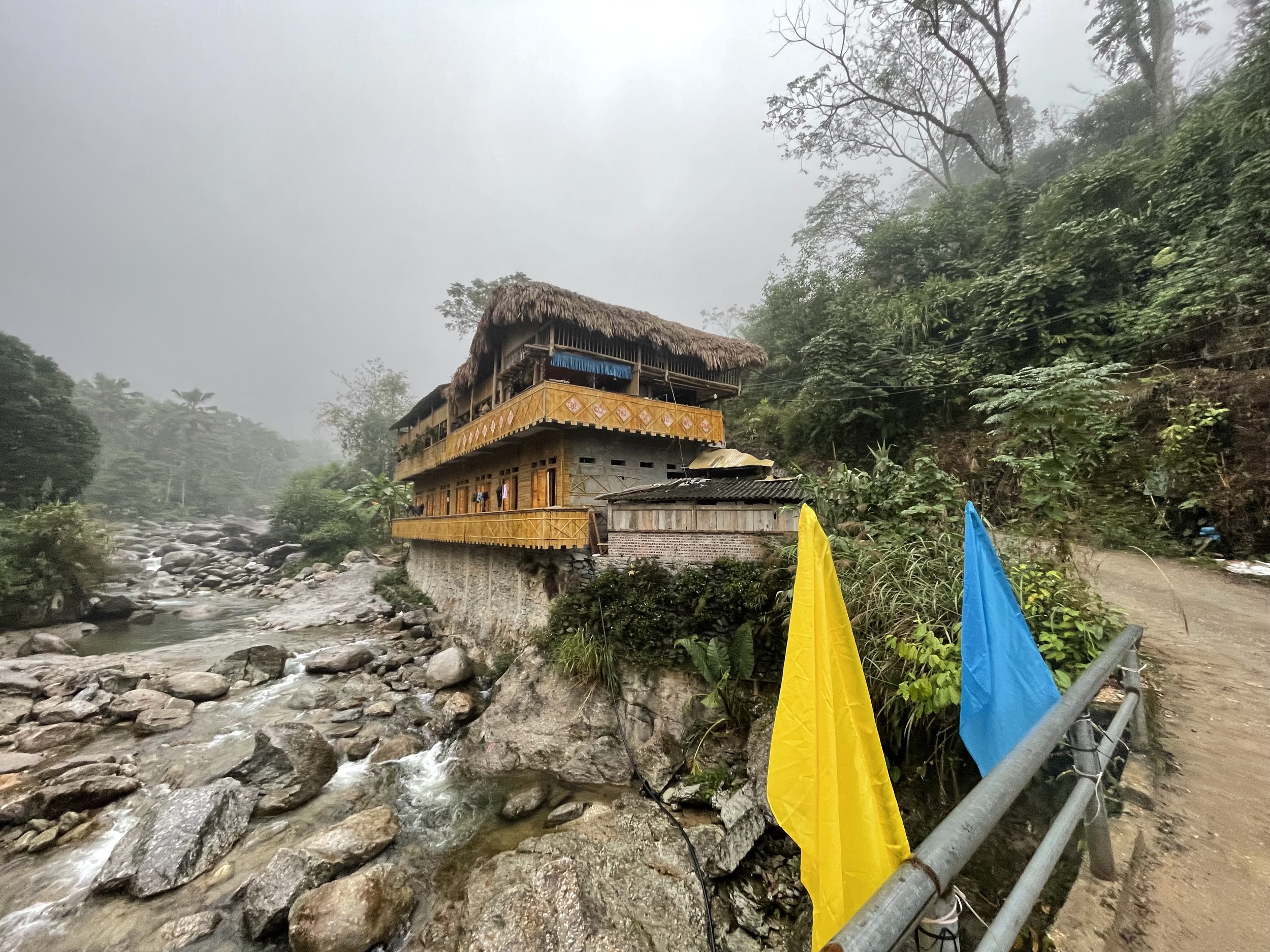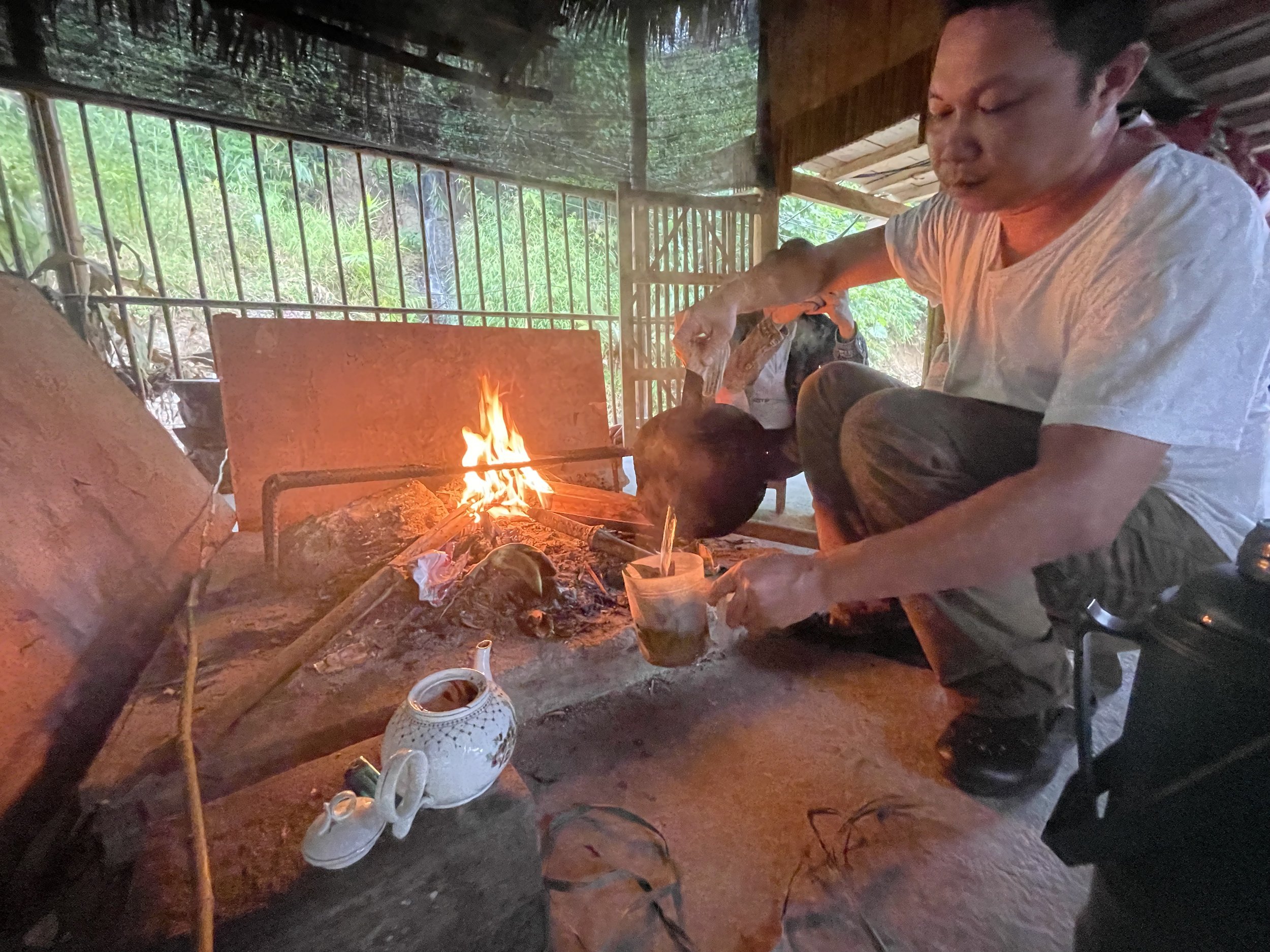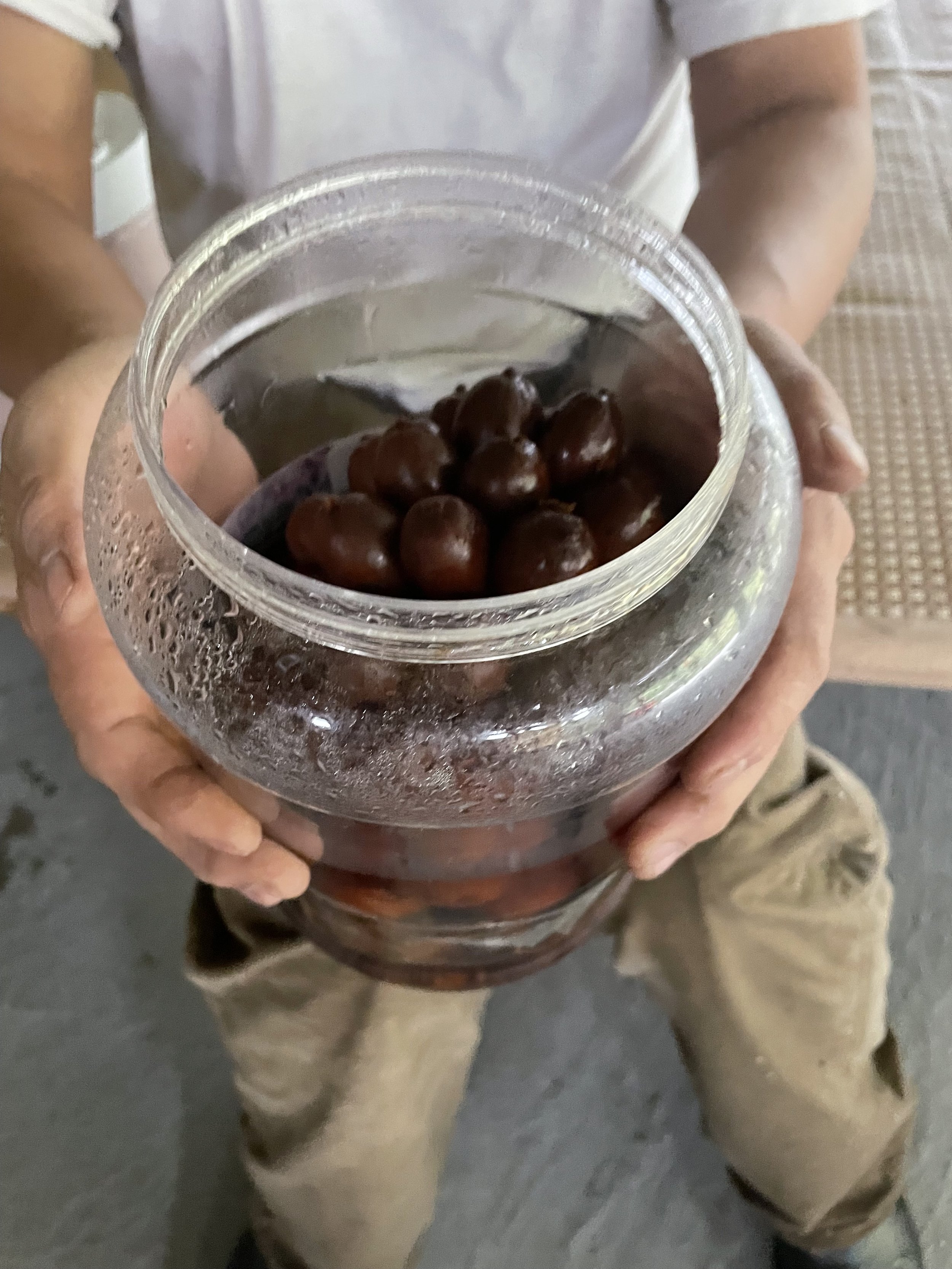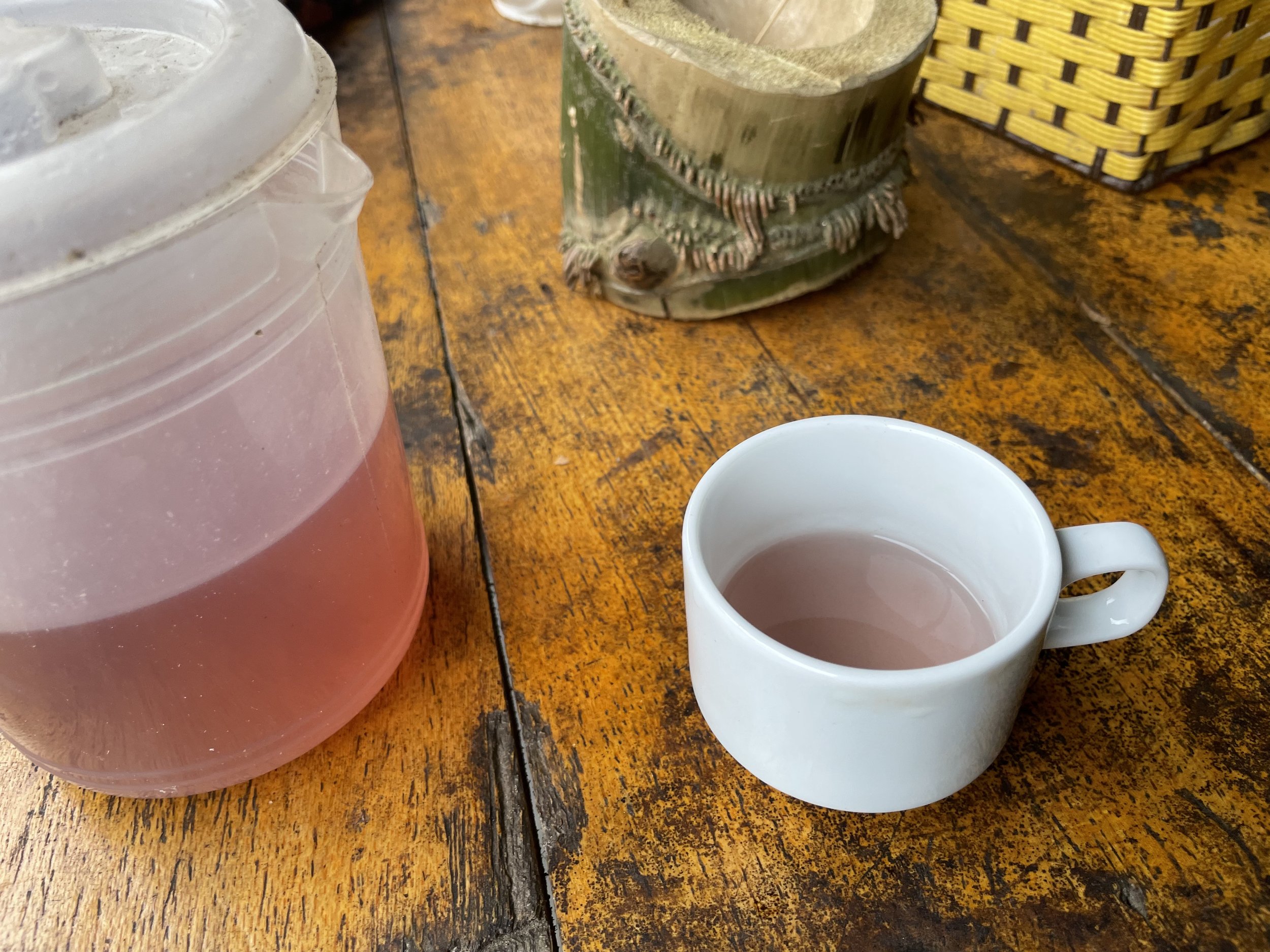Wild tea trees
The mountains in Hà Giang province are home to wild tea trees. Some are said to be a thousand years old. Hà Giang is also the name of the provincial capital of the province (56.000 inhabitants), and my destination. I booked into the Maison Teahouse for just two nights. The first night was marked by the birthday of the grandmother and loud karaoke until late.
The next day I went to the Tea House of Baiyue Tribe without much of an exact plan, except wanting to see the wild tea trees. Baiyue refers to various ethnic groups who inhabited the regions of East China, South China and Northern Vietnam during the 1st millennium BC and 1st millennium AD. Baiyue is a term used by the Han Chinese to denote the peoples south of the Yangtze river, also called Bách Việt. The Bách Việt/Baiyue society was made up by different clans. The clan of Lạc Việt are claimed to be the forefathers of Vietnam today.
The name Baiyue Tribe is a tribute to an ancient past and does not refer to a contemporary tribe.
Soon one of the founders of the tea house greeted me (we connected on Facebook so I assumed I had his name, but on Facebook his profile is called Trà Tea, which just means tea in two languages). By then it was clear I arrived off-season and the tea house was pretty deserted. After I expressed my interest in tea we sat down to drink pu’er tea. Opposed to Japanese and Chinese tea culture, Vietnamese tea is not ceremonialized. There are no strict rules on the temperature of the water, or whether to put your utensils to the keft or the right of the tea bowl. At the end of a tea session the water and tea can be lukewarm. It doesn’t matter. The main function of tea is to talk. The tea is a vessel for conversation.
And so we talked. I wanted to see the wild tea trees in the mountains and he arranged a car with driver for the afternoon. I was thrilled. When I woke up I had no idea if I my plan would come to fruition.
Even brewed for a long time, this pu’er didn’t get bitter.
Before we drove into the mountains we had lunch in Vị Xuyên. This is really my kind of food. Thịt Kho Trứng, stewed vegetables, fried minced meat with ground rice (similar to northern Thai laab ลาบหมู) and another pork dish with fried shrimp. My guide explained to me that food is eaten according to the ying-yang principle. This is the tenet that food items are classified as "heating" (热; 熱; rè) or "cooling" (凉; 涼; liáng). In practice it means that your food intake is balanced between vegetables and meat.
After lunch we drove into the mountains. The drive took about an hour to a homestay, which is used for hiking trips higher into the mountains, about 20 kilometers from the main road. A hike to one of the summits would take another seven hours, so I didn’t get higher than the homestay Thung lũng chè shan tuyết (Valley of the Shan Tuyết tea). Along the way we got out of the car and walked into some land containing old tea trees and fields were tobacco and cabbage was grown. The soil is so fertile its is possible to rotate four crops per year on a piece of land.
It is believed the ‘wild’ tea trees are actually planted by local people and not truly wild. Most of the trees are not older than 150 years. Some claim there are 1000 year old trees in the mountains but this is unlikely. The tea made of wild old tea trees is called shan tuyết (snow mountain). Strictly speaking shan tuyết should be made from the leaves of old trees.
Field with cabbage.
Homestay Thung lũng chè shan tuyết. Address: Thôn, Lùng Tao, Vị Xuyên, Hà Giang, Vietnam.
There were no guests staying at the homestay and the doors were locked. A man came down of his motorcycle to unlock the doors and start a fire for boiling water. We made tea from large dried tea leaves. I don’t think the tea was processed any further other than drying. The leaves are so tough you first have to soak them in boiling water before you can start brewing.
Tea is not the only drink in the mountains. There are many versions of homemade alcoholic drinks. We drank a naturally fermented black sticky rice drink and the container above contains rượu nhãn, which means alcoholic longan. I think rice wine is added to the longan instead of a purely fermented alcohol like the black sticky rice drink, which had many dried mountain herbs added. In the end we drank as much alcohol as tea.



